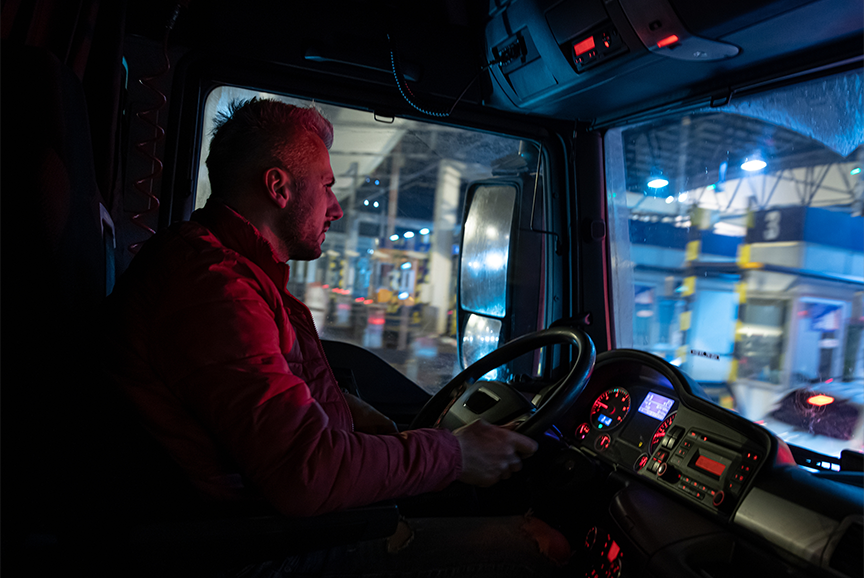
Professional truck drivers have a difficult job. The hours are long, the work can be physically demanding, good service often goes without a thank-you, and many spend significant time away from their families. In addition to being on the road, drivers have to manage paperwork such as proof of delivery (POD) and bill of lading (BOL), negotiate with freight brokers, find accurate directions, and manage loads and payment — all in addition to finding places to eat, shower and park.
When mobile apps came on the scene more than a decade ago, carriers, fleets and other supply chain partners were excited about their potential to help drivers handle tasks efficiently while gaining real-time visibility into location. Driver-facing apps quickly proliferated, and while having an app for everything sounded good initially, it soon became overwhelming for drivers.
The average smartphone has 80-plus apps installed, and truck drivers may have even more since they’re often asked to download and use specific apps by shippers, freight brokers, fleet managers and the like. Drivers spend about 4.5 hours per day on their smart devices, and approximately 90% of that time interacting with apps. Of those 80-plus apps, they typically only engage with nine on a routine basis. In fact, 62% of installed apps aren’t utilized on a monthly basis, and 25% of apps are only used once after being downloaded.
All of this means that drivers are experiencing app fatigue, the growing exhaustion of too many mobile applications available at their fingertips.
The overwhelming majority of drivers want to work efficiently and comply with requests, but app fatigue leads many to choose not to download yet another app. Conversely, they may download the app as requested but turn off notifications and tracking or fail to activate it. The problem is that the various players in the ecosystem want to push their apps forward, but driver time and attention is limited. Drivers are like the general population: they gravitate to using apps with the most benefits, leaving others behind.
Supply chain partners need to step up and address driver app fatigue. Eliminating nonessential apps and ensuring that promising ones consistently deliver value is one solution. A better solution is consolidating mobile applications on a single “app of all apps” platform, to allow drivers to stay safe and work more efficiently with less hassle. It can also help carriers, fleets, brokers and other partners get the insights they need to improve the supply chain from one central resource.
Too Many Apps Fail to Deliver Value
We’ve all been there as consumers — you download something from the app store to get a specific function, but it doesn’t deliver the utility you were looking for, so you delete it. This happens to drivers too, and with so much competition, apps must deliver value quickly to keep drivers active on their smart devices.
The ability to track locations is a huge industry and consumer pain point, so the supply chain sector has poured billions of dollars into technology to address the issue, such as by implementing geofencing and geolocation settings. These features also allow for security measures like opening gates for drivers, as well as ensuring drivers and cargo aren’t lost. The problem? Many companies are only seeing a 30% to 50% acceptance rate, which is low given the maturity of the technology and demand for the data.
App fatigue is making it difficult for supply chain partners to fully realize the potential of the technologies they’ve developed. And it’s putting pressure on drivers, who can get distracted by dozens of notifications and alerts, or the need to swipe from app to app to do their jobs. This can create safety risks – and since safety is a top priority, that makes addressing app fatigue critical.
App fatigue can also cause driver burnout; with sky-high driver turnover rates and some fleets turning over 80% to 100% of drivers annually, reducing stressors should also be a top priority to improve retention. The average age of commercial truck drivers is 55, so when managers push additional technology and functions on them — with the intention of helping them work more efficiently — it can backfire, causing burnout and, in some cases, non-compliance.
Collaboration and Automation
Supply chain partners can alleviate app fatigue and realize the full benefits of technology capabilities by working together to present apps on an integrated platform, and adopting automation technologies that streamline manual tasks.
It’s imperative to be realistic about how much value a standalone app can deliver to drivers, how many downloads they can reasonably expect, and how much driver attention it will attract. The “app of apps” strategy, by contrast, gives drivers a one-stop shop by integrating partner applications to deliver multiple functions, such as location visibility, dispatching, tracking, tracing, routing, navigation, weigh station bypass, fuel payments and more.
Partnering with a technology provider that creates digital ecosystems for all supply chain professionals, including drivers, can be a better alternative to developing an app in-house, which can cost hundreds of thousands of dollars to create and maintain. Most companies can’t put the investment into a high-quality app, creating a need to choose a partner who already has the density, can save money and provide a better user experience. If branding is a priority, partnering with a technology provider that offers a white label option is a great solution. Fleets can deploy an app branded with their company logo without significant investment, resources and ongoing app maintenance. The white label technology partner can take care of integrations, routine maintenance, app store changes and requirements and bug fixes.
Automation can also address driver app fatigue and streamline workloads. Gartner estimates that the hyper-automation market will reach $600 billion this year, and there’s massive potential to use machine learning and more predictive technologies in the supply chain to automate workflows and eliminate manual work. Intelligent automation can speed payments to drivers, extract data from document images, translate handwritten notes into text, automate load verifications and much more.
The ultimate vision is that of an ecosystem that supports drivers, enabling them to drive without worrying about the source of their next load, negotiating rates, finding the nearest fuel or rest stop. The ideal driver experience will be a seamless one, with paperless ePODs and eBOLs that don’t require drivers to exit the cab, and provides ambient payments when the load is successfully delivered.
By collaborating with other supply chain partners to offer a one-stop shop mobile app for drivers, and taking advantage of rapidly maturing hyper-automation capabilities, companies can step up and eliminate app fatigue and get the data and insight they need to improve operational efficiency. That can transform the driver experience — and the supply chain itself.
Bill Vitti is president and chief revenue officer of Transflo.







